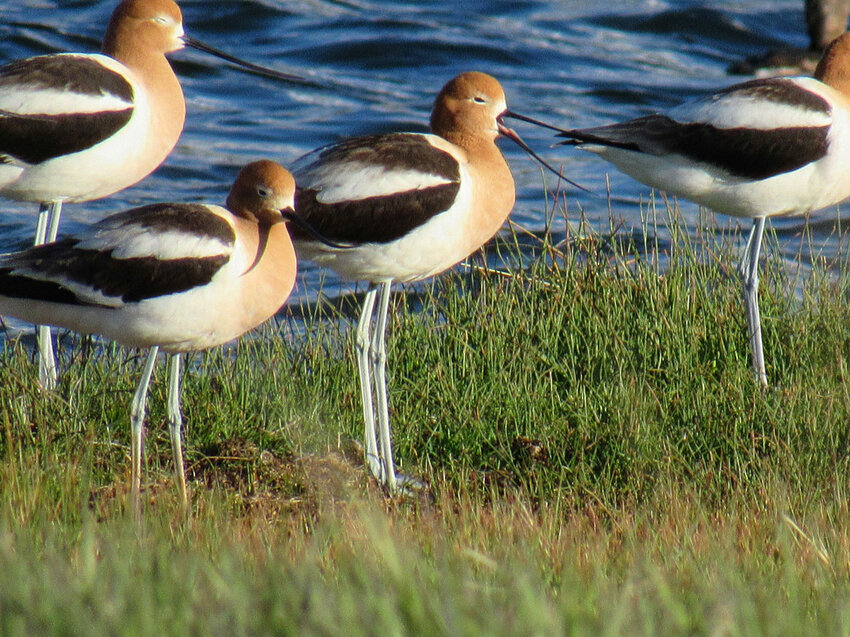
Photo courtesy Charles Martinez
This week’s Bird of the Week, compliments of the Weminuche Audubon Society and Audubon Rockies, is the American avocet.
In the classification of more than 200 species of shorebirds, stilts and avocets, with their long, thin, upcurved bills, are grouped together as one family. These slender, long-legged birds are described as elegant and the name avocet comes from an Italian word meaning graceful bird.
The American avocet, patterned in black and white, has a rusty-colored head and neck in breeding plumage. Standing tall among other shorebirds, it is able to wade farther from shore in wetland water. Here, avocets often forage in flocks, moving across the wetland in unison while sweeping their bills side to side in the water to stir up prey. With the tips of their bills slightly open, they capture aquatic invertebrates and small fish from just below the surface.
American avocets breed in loose colonies across the middle section of the west. They are most often found in open areas with little vegetation and build their nests on bare ground, not far from water. Intruders who approach a colony on foot are greeted by a group of adults running at them in a crouch with wings spread.
With few exceptions, shorebirds nest on the ground and rely on camouflage to conceal their nests. Large eggs allow the chicks to develop more fully before hatching and be able to feed themselves shortly after.
With a need for wetland connectivity and a sensitivity to contamination, Cornell Lab in its Birds of the World website describes American avocets as “indicators of environmental stressors within western wetlands.”
For information on events, visit www.weminucheaudubon.org and www.facebook.com/weminucheaudubon/.